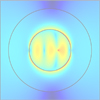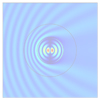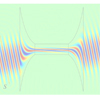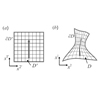Nano-optics and Plasmonics
Light is a great tool to probe and shape the world around us. In conventional optics the length to which light can be focused is limited by diffraction. The focus size is on the order of the wavelength, around half of a micrometer for visible light. However, modern nanotechnology demands that light is focused below the diffraction limit - many technologically interesting structures or biological specimen have only few nanometers across.
Light can be forced into the nano-domain by its interaction with a large number of electrons in a metal. Electrons are capable of oscillating collectively at frequencies that depend on the metal and its geometry. These oscillations are called plasmons. Of particular interest are surface plasmons which are plasmons occurring in metallic nanoparticles or at a metal-dielectric interface in general. The interaction of surface plasmons with an external electromagnetic wave produces high intensity electromagnetic fields tightly bound to the metal-dielectric interface increasing the field confinement up to hundredfold.
Surface plasmons have found applications in broad areas such as the therapy of tumors (see L.R. Hirsch et al., PNAS 100, 13549 (2003)), enhancement of LED efficiency (see K. Okamoto et al., Nature Mat. 3, 601 (2004)) and in the surface plasmon resonance imaging of biological specimen (see www.horiba.com).
We study ordered structures in which the particles are metallic unit cells periodically arranged in layers. Examples are the split-ring resonator and fishnet metamaterials designed to display a large scale resonant response by coherently combining many plasmonic units. In metamaterials the properties of light at the nano-scale are used to control light at the macro-scale. Therefore, metamaterials are where conventional and nano-optics meet with possible applications in sensing, sub-diffraction lenses, cloaking, etc.
Our research consists of visible and infrared ellipsometric and photometric spectroscopy of various systems including metallic nanostructures fabricated by our partners from the NIM_NIL consortium (www.nimnil.org). We are also work on the design and theoretical analysis of various novel optical devices such as the electromagnetic cloak or transformation optics devices. The figures below showcase some of our recent research topics.
Rectangular fishnet structures at near-infrared frequencies
Fishnet metamaterial structures are based on two-dimensional array of holes perforated in metal/insulator/metal thin film stack. They support highly confined gap plasmon polartions (GPPs) in the thin dielectric layer. The spectral position of the GPPs in mainly determined by the 2D periodicity of the structures, while the size and the shape of the holes strongly influence the efficiency of GPP excitation, as well as the slopes of their dispersion curves.
In the study depicted in Figures 1 and 2, we used variable-angle reflection ellipsometry to investigate the polarization-dependent optical excitation of GPPs in a fishnet metamaterial with rectangular holes at near infrared frequencies. We found that the GPPs polarized along the short axis of the holes are much more efficiently excited by external illumination and have a higher deviation from the flat film GPP dispersion. By numerical examination of fishnet structures with decreasing hole sizes but a fixed aspect ratio, we found that the polarization dependence persists even in the absence of hole resonances, suggesting that it can be explained by the quasi-static polarizability of holes.
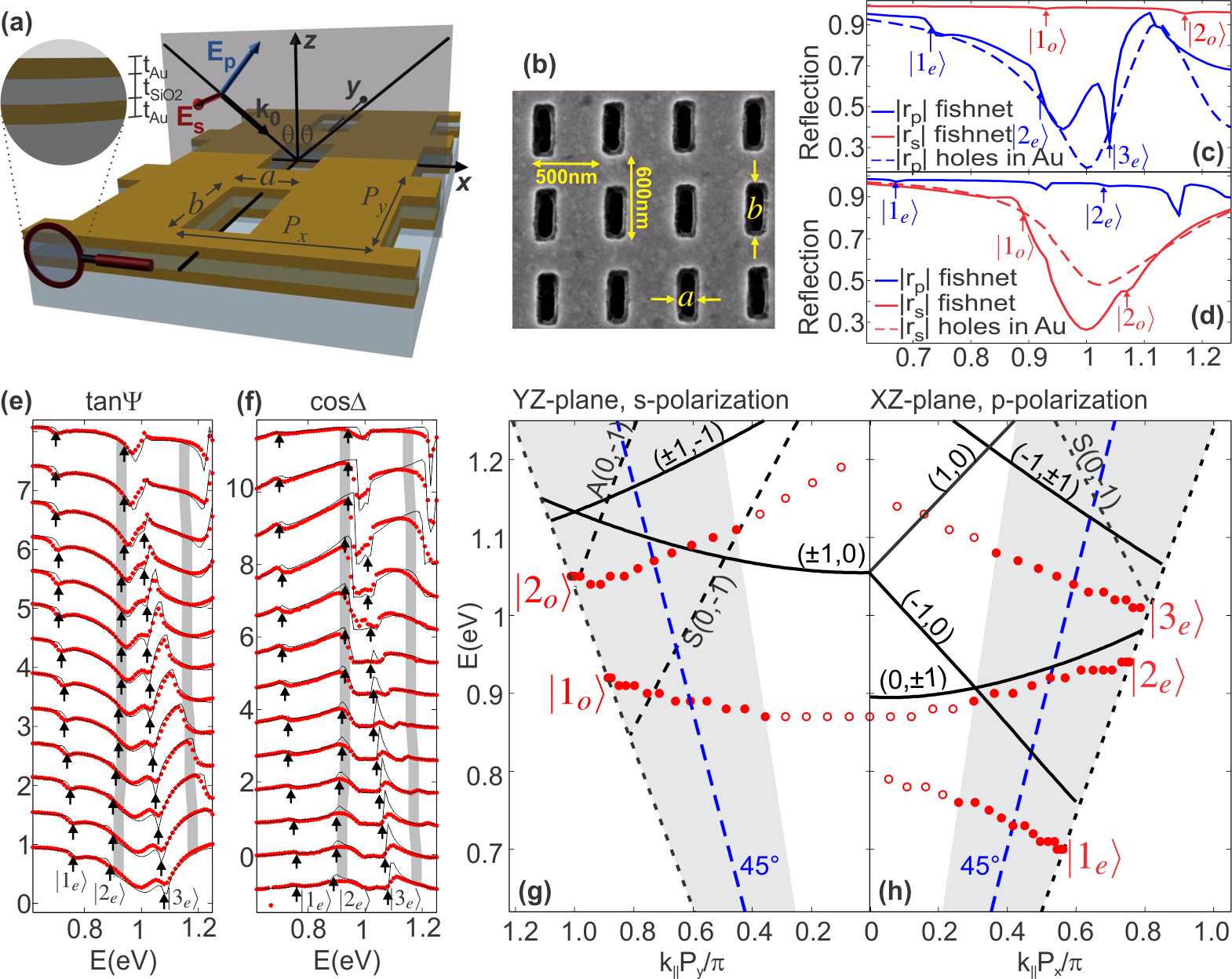
Figure 1. Sample and experiment schematics (a) and the top view SEM image (b). Numerically calculated reflection spectra at 45° for the XZ (c), and YZ (b), plane of incidence. Measured (dots) and calculated (lines) tan (e), and cos (f), spectra acquired for the XZ plane of incidence with arrows indicating the GPP resonance features. The GPP dispersion curves extracted from ellipsometric data for the two planes of incidence are given in (g) and (h). The full dots within the shaded section of the lightcone indicate the GPPs observed in both experiments and simulations, while the empty circles correspond to data for which only simulations are available (M. M. Jakovljevic et al. Applied Physics Letters 106, 143106 (2015)).
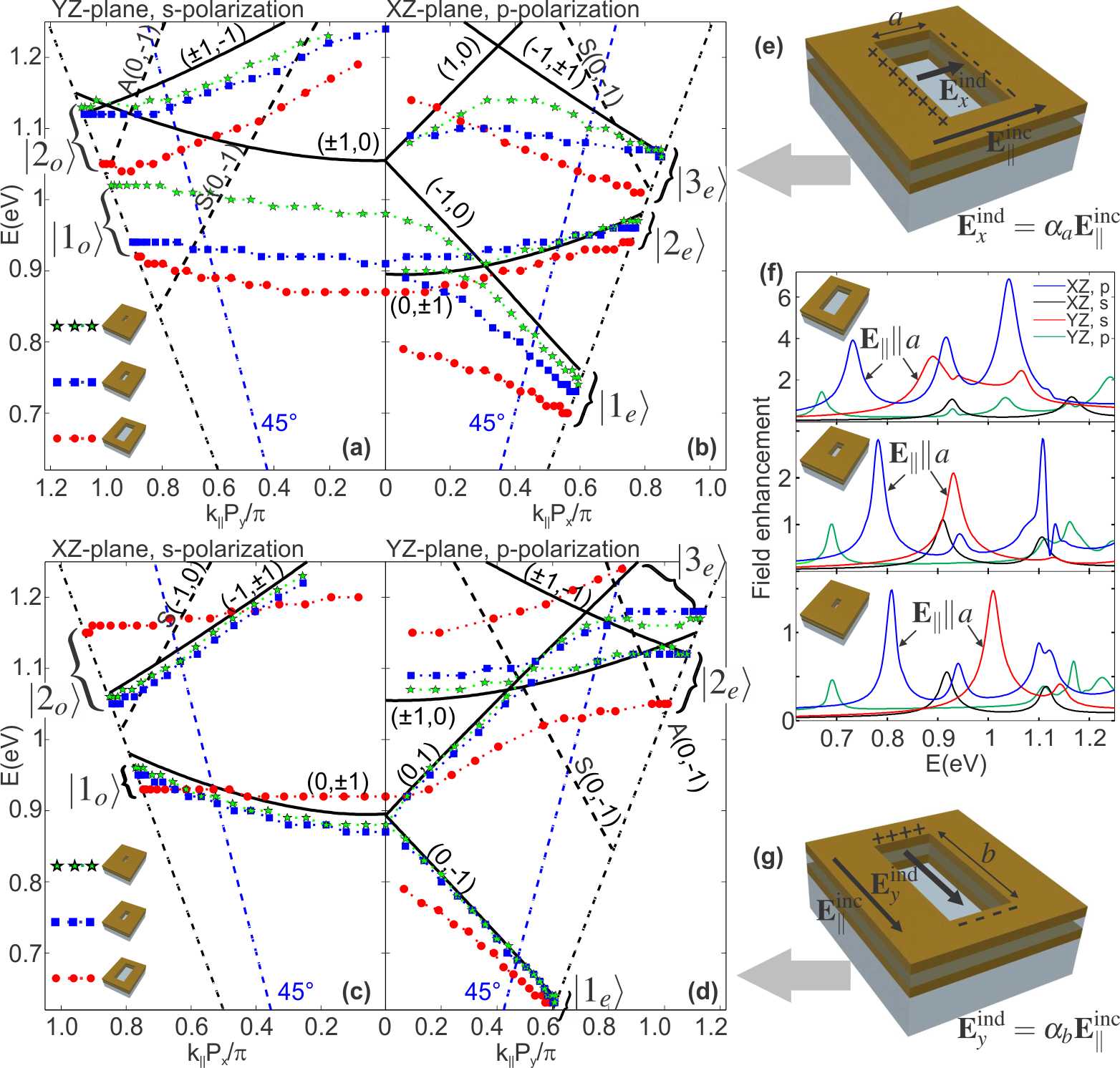
Figure 2. (a-d) GPP bandstructure of fishnets with varying hole sizes: the original (circles), two (squares), and three (stars) times smaller holes. (f) Calculated field enhancement spectra (average in the silica layer) at 45°. The fishnet unit cell indicating the hole polarization along its short (e), and long (g) axis (M. M. Jakovjlevic et al. Applied Physics Letters 106, 143106 (2015)).
Mid-infrared localized surface plasmons in split-ring resonators
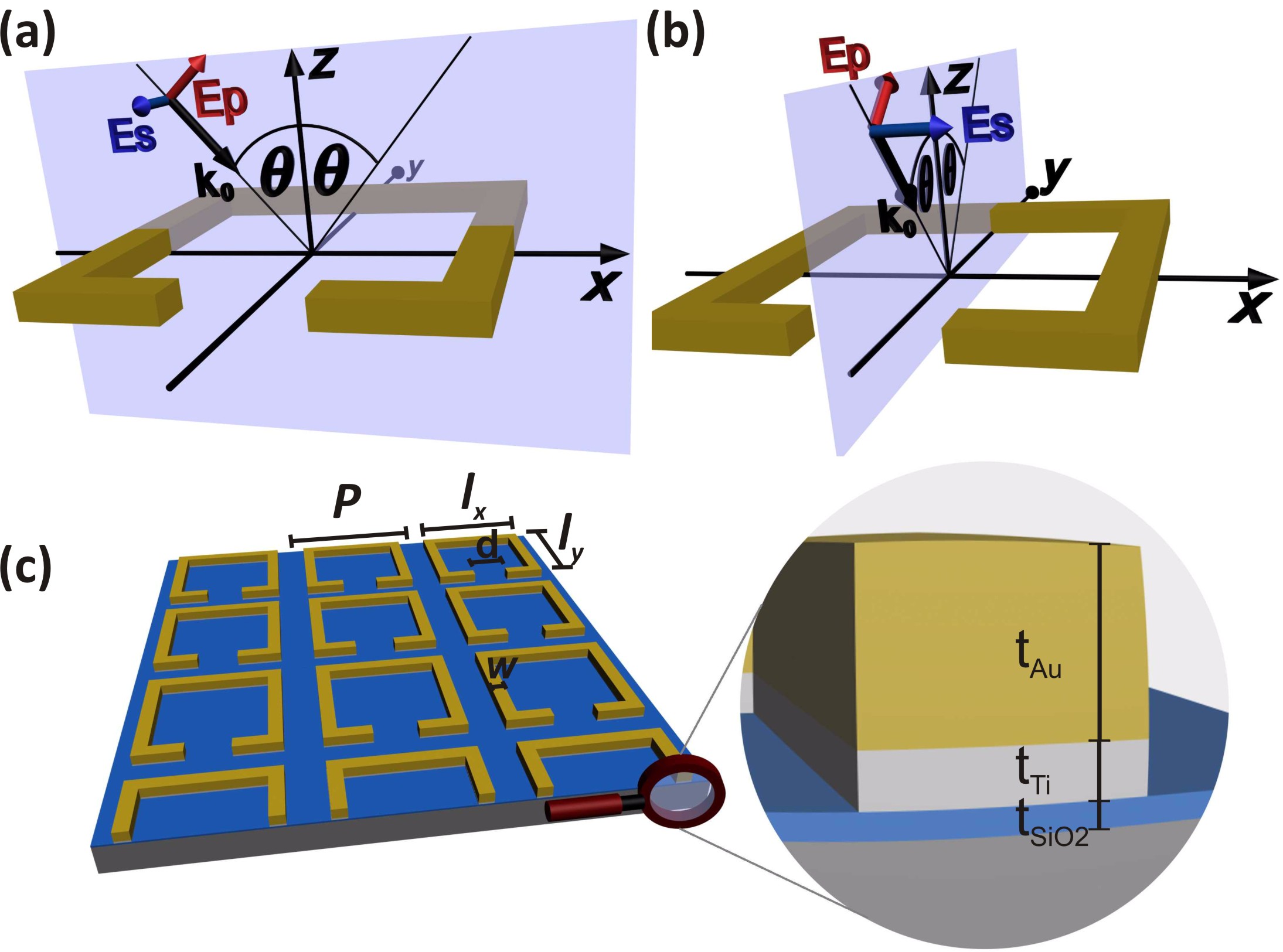
Figure 3. Schematics of the split-ring resonator lattice with a 1 micron periodicity fabricated within the NIM_NIL project. (a,b) the ellipsometric measurement setup, (c) the split-ring resonator lattice on a silicon substrate with a native layer of silicon-dioxide. (M. Jakovljević et al., Appl. Phys. Lett. 100, 161105 (2012))
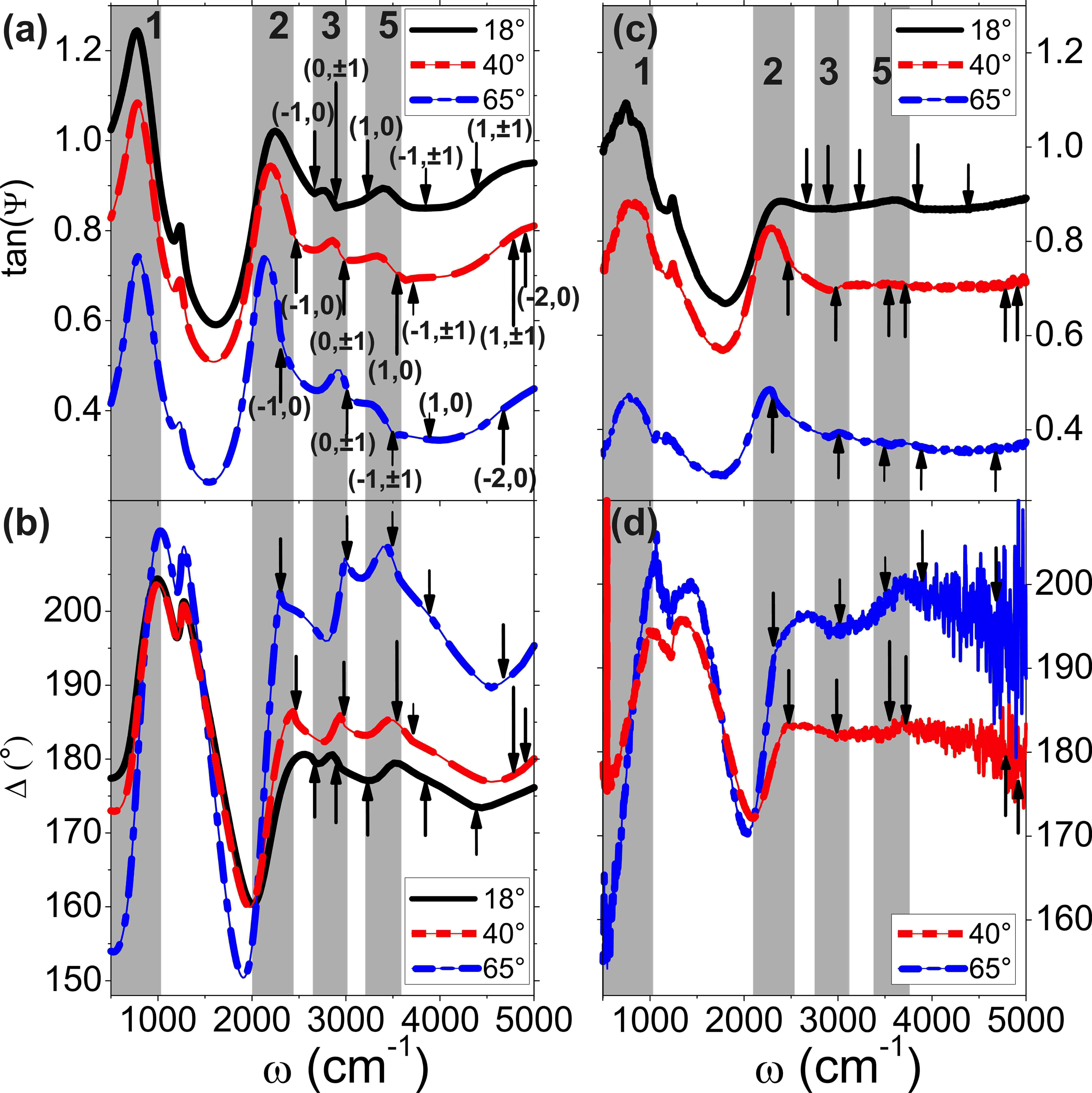
Figure 4. Comparison of the (a,b) simulated and (c,d) measured ellipsometric spectra of the split-ring resonator lattice from Fig. 1. The simulations help understand the properties of plasmonic modes and Rayleigh diffraction anomalies appearing in the spectra. (M. Jakovljević et al., Appl. Phys. Lett. 100, 161105 (2012))
Gap plasmon polaritons in flat metal-insulator-metal structures
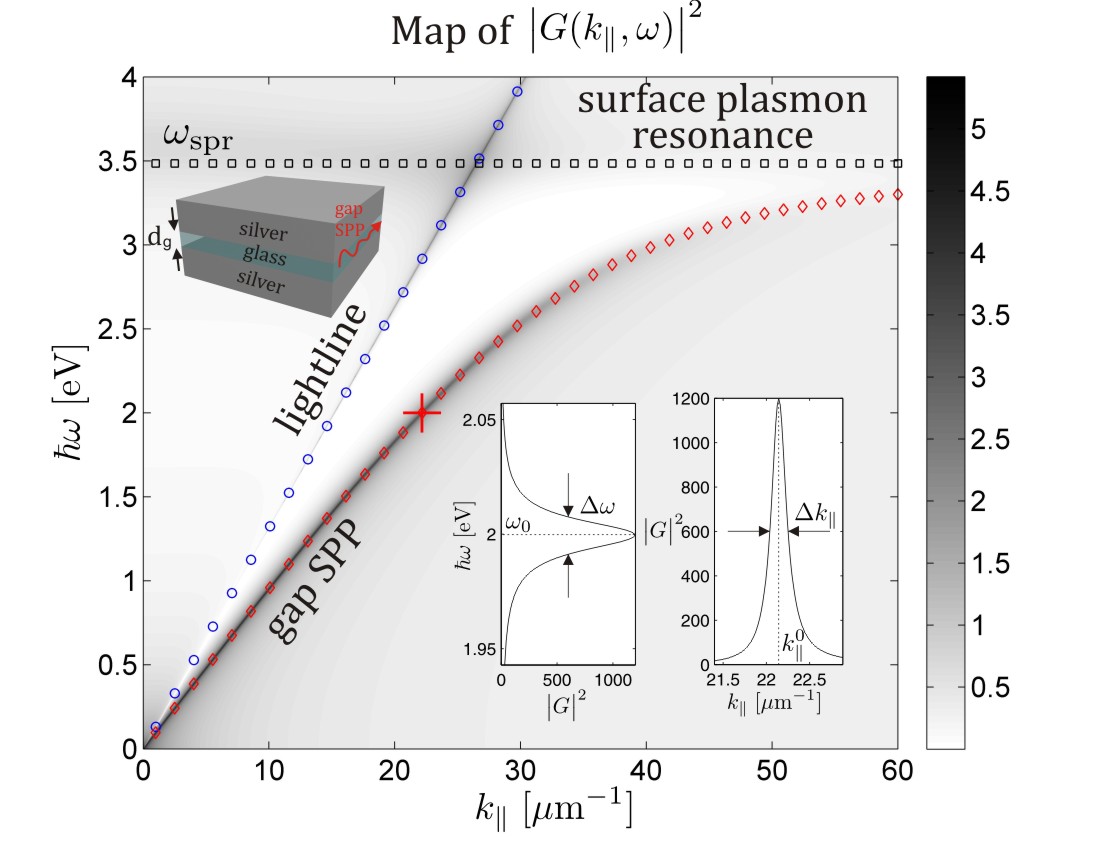
Figure 5. Numerical simulation of the surface plasmon response map of a silver-glass-silver planar structure, as depicted in the top left inset. Here light propagation in nanoscopically thin (50nm in this case) dielectric layers sandwitched between two silver plates is investigated. Such geometries are significant for development of novel integrated plasmonic circuits. (G. Isic and R. Gajic, J. Opt. Soc. Am. B 31, 393 (2014))
Surface plasmons in metallodielectric superlattices

Figure 6. The study of the plasmonic bandstructure and propagation length in stratified plasmonic crystals comprised of periodically repeated silver-titanium oxide layers. The left, middle and right panels depict three cases with increasing dielectric thickness. The periodic arrangement of thin metal-dielectric layers is significant for increasing the optical density of states due to the formation of surface plasmons. However, in contrast to surface plasmons tied onto a single interface, surface plasmons in these periodic structures can travel across the layers. (G. Isic, R. Gajic, S. Vukovic, Phys. Rev. B 89, 165427 (2014))




